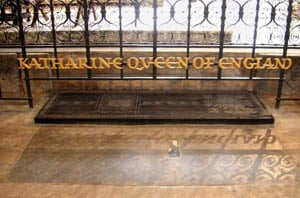Annulment of Eleanor of Aquitaine's Marriage
Posted on
On this day in 1152, Eleanor of Aquitaine officially became a single woman. Her fourteen-year marriage had begun when she was just a teenager, now she was a mother of two daughters, and Duchess of Aquitaine in her own right. Her now former husband, King Louis VII of France, made sure that part of the divorce meant that Eleanor would have to ask his permission to remarry. Unfortunately for Louis, it wouldn't work out that way.
The Marriage
Eleanor and Louis had married in July 1137, within months of her father's death. As the eldest surviving daughter, with no brothers, Eleanor was the 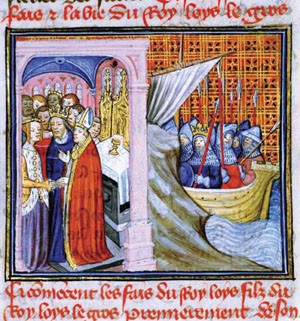 new Duchess of Aquitaine. Prince Louis' father spotted an opportunity to increase his kingdom, and promptly dispatched his son and heir to marry her.
new Duchess of Aquitaine. Prince Louis' father spotted an opportunity to increase his kingdom, and promptly dispatched his son and heir to marry her.
Their marriage was not a happy one. There was a strong clash of personalities and cultures, there was a big difference between Louis' French court and the Aquitainian lifestyle that Eleanor was used to. Louis was also extremely devout, while Eleanor simply followed more traditional piety. They had one child, a daughter named Marie, before they went on Crusade together. While they were in Antioch, rumours flew around that Eleanor was having an affair with her uncle Raymond. Sources state that she suggested to Louis that they divorce, but he refused.
On their eventual journey home they visited the Pope, who worked to reconcile the arguing couple. Eleanor became pregnant with her second child, which turned out to be another daughter. This little girl's birth is probably what saved her from continuing her marriage to Louis, as the French court helped persuade him to divorce her, so that he could marry another woman who would give him a son. The annulment was granted on 21st March 1152 on the grounds of consanguinity, meaning that the Church felt the couple were too closely related. Eleanor once again became Duchess of Aquitaine in her own right, but Louis had to approve any future marriage she might consider. Their daughters were also left to be raised in the French court, rather than sent to Aquitaine with their mother.
The Aftermath
Eleanor raced back to Aquitaine, escaping several attempts to capture her and force her in to marriage. The fact that she travelled as quickly as she did shows that she was well aware of the danger she was now in, while travelling at all shows just how brave and determined she was to make her own life from now on.
In fact she was so determined that she ignored the requirement to see permission from Louis, and remarried eight weeks after her divorce. Her choice of groom was Duke Henry of Normandy, their marriage combined two large Duchies to create the kind of border problem that Louis had wanted to avoid. Henry was everything that Louis wasn't; brave, decisive, quick to take action. She and Henry would go on to have five sons and three daughters, and become King and Queen of England.
While the ending of her marriage to Henry was far from positive, at least the start of it was better than her marriage to Louis.
____________
Fans of Eleanor of Aquitaine should check out her badge!
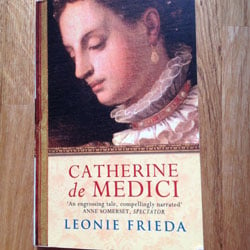 includes Catherine's own letters, which were preserved as her belongings were auctioned off after her death to pay her debts, as well as sources from archives in France and Italy, and earlier scholarly work. She includes family trees, lists of the main historical figures, and maps of France and Italy so you can go back and refer to them if you get mixed up (useful for me as I kept forgetting where La Rochelle is).
includes Catherine's own letters, which were preserved as her belongings were auctioned off after her death to pay her debts, as well as sources from archives in France and Italy, and earlier scholarly work. She includes family trees, lists of the main historical figures, and maps of France and Italy so you can go back and refer to them if you get mixed up (useful for me as I kept forgetting where La Rochelle is). This was slowly being balanced off by the development of Unions. But for the men of Burradon, this was still a long way away. Instead they were supported in their efforts by a local newspaper, The Daily Chronicle. In particular they were keen to start a fund that would help the widows and orphans of men who died down the mine. Before the disaster the men were trying to come to an agreement with the coal company, each man would pay 2d a week in to the fund, they wanted the company to contribute a further 1d per man each week. However the coal company was reluctant to take part.
This was slowly being balanced off by the development of Unions. But for the men of Burradon, this was still a long way away. Instead they were supported in their efforts by a local newspaper, The Daily Chronicle. In particular they were keen to start a fund that would help the widows and orphans of men who died down the mine. Before the disaster the men were trying to come to an agreement with the coal company, each man would pay 2d a week in to the fund, they wanted the company to contribute a further 1d per man each week. However the coal company was reluctant to take part.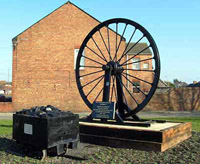 I was eighteen, and I never got round to asking him if any of his family had been living in Burradon at the time. One of the deceased was a Francis Smith, and a Thomas Smith is listed as one of the survivors, but Smith is a very common surname and I can't prove if they were related to my grandfather's family at all.
I was eighteen, and I never got round to asking him if any of his family had been living in Burradon at the time. One of the deceased was a Francis Smith, and a Thomas Smith is listed as one of the survivors, but Smith is a very common surname and I can't prove if they were related to my grandfather's family at all.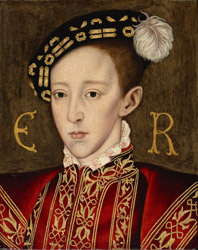 Edward was young, he couldn’t lead his troops in to battle against the French (a guaranteed way to gain some popularity) or marry a beautiful princess with a rich dowry (a wedding was also a good way to cheer the people). His regency council, who had been named in Henry’s will, were quick to get him crowned as it gave both him and them legitimacy. While the organisation may have been rushed, the coronation itself was still a splendid display of Tudor wealth.
Edward was young, he couldn’t lead his troops in to battle against the French (a guaranteed way to gain some popularity) or marry a beautiful princess with a rich dowry (a wedding was also a good way to cheer the people). His regency council, who had been named in Henry’s will, were quick to get him crowned as it gave both him and them legitimacy. While the organisation may have been rushed, the coronation itself was still a splendid display of Tudor wealth.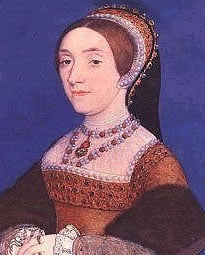
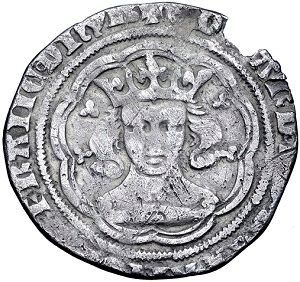
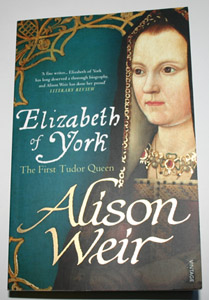 The Book
The Book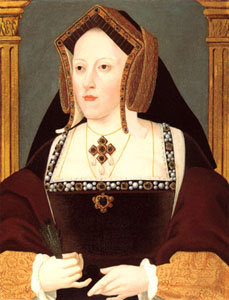 As any student of Tudor history will know, that was a marriage that did not last long or end happily. Catherine spent several years as a widow before marrying King Henry VIII within weeks of his father's death. There followed over twenty years of heartbreak as Catherine frequently miscarried, gave birth to stillborn babies or lost live children within weeks of their birth, with only one daughter name Mary surviving in to adulthood. To this day the reasons why the family was hit by so many tragedies has baffled scientists, especially as it then continued with Anne Boleyn (Jane Seymour had one live son but died herself, Henry's following three wives never had children by him).
As any student of Tudor history will know, that was a marriage that did not last long or end happily. Catherine spent several years as a widow before marrying King Henry VIII within weeks of his father's death. There followed over twenty years of heartbreak as Catherine frequently miscarried, gave birth to stillborn babies or lost live children within weeks of their birth, with only one daughter name Mary surviving in to adulthood. To this day the reasons why the family was hit by so many tragedies has baffled scientists, especially as it then continued with Anne Boleyn (Jane Seymour had one live son but died herself, Henry's following three wives never had children by him).